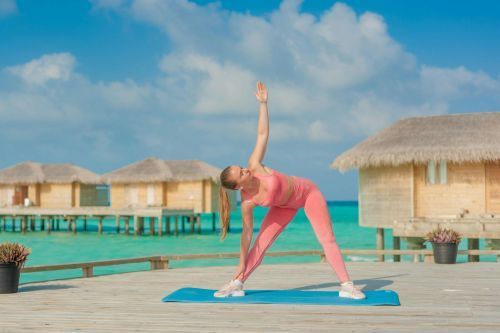Pilates for Improving Posture
Pilates for Improving Posture

In today’s fast-paced world, posture often becomes a silent casualty of modern living. Between desk-bound workdays, long commutes, and the demands of parenting, many people find themselves battling back pain, rounded shoulders, and muscular imbalances. Pilates, a low-impact, full-body exercise method, offers a powerful solution—not just for fitness, but for restoring alignment, strength, and confidence.
This article explores how Pilates improves posture, the science behind its effectiveness, and how you can benefit from incorporating Pilates into their weekly routine.
What Is Pilates?
Pilates is a system of controlled exercises developed by Joseph Pilates in the early 20th century. It focuses on core strength, flexibility, and mindful movement. Unlike high-impact workouts, Pilates emphasizes precision, breath control, and alignment—making it ideal for individuals of all fitness levels.
There are two main types:
- Mat Pilates: Performed on a mat using bodyweight and small props.
- Reformer Pilates: Uses a spring-based machine to add resistance and support.
At its core, Pilates is about balance—between strength and flexibility, effort and ease, and mind and body.
Why Posture Matters
Posture isn’t just about standing tall—it affects every aspect of physical health:
- Spinal alignment influences nerve function and mobility.
- Muscle balance prevents strain and injury.
- Breathing efficiency improves when the chest is open and shoulders relaxed.
- Confidence and mood are often linked to how we carry ourselves.
Poor posture can lead to chronic pain, fatigue, and reduced mobility. For women juggling work, family, and personal wellbeing, addressing posture is essential for long-term health.
How Pilates Improves Posture
1. Strengthens the Core
Pilates targets the deep abdominal muscles, pelvic floor, and lower back—collectively known as the "powerhouse." A strong core stabilizes the spine and supports upright posture.
2. Enhances Spinal Alignment
Pilates exercises promote awareness of spinal curvature and encourage neutral alignment. This reduces excessive arching or rounding and supports a healthy posture.
3. Improves Flexibility and Joint Mobility
Tight muscles—especially in the hips, shoulders, and chest—can pull the body out of alignment. Pilates stretches these areas while strengthening opposing muscle groups, restoring balance.
4. Builds Postural Awareness
Pilates is a mindful practice. Each movement is performed with intention, helping participants become more aware of how they sit, stand, and move throughout the day.
5. Addresses Muscle Imbalances
Many postural issues stem from overused or underused muscles. Pilates corrects these imbalances by evenly strengthening the body, reducing the risk of injury and discomfort.
Pilates for Everyday Posture Challenges
Desk Work & Tech Neck
Hours at a computer can lead to forward head posture and rounded shoulders. Pilates counteracts this by strengthening the upper back and opening the chest.
Parenting & Lifting
Carrying children or heavy bags can strain the lower back. Pilates teaches proper lifting mechanics and builds core stability to protect the spine.
Hormonal Changes & Aging
As women age, hormonal shifts can affect bone density and muscle tone. Pilates supports bone health and maintains strength, flexibility, and balance.
Scientific Evidence Supporting Pilates for Posture
A 2024 systematic review published in BMC Sports Science, Medicine and Rehabilitation analyzed nine studies involving 643 participants. It concluded that Pilates significantly improved spinal deformities, posture, and quality of life.
Healthline also highlights that Pilates:
- Improves core strength
- Enhances body awareness
- Reduces back pain
- Prevents injuries
These benefits make Pilates a valuable tool for posture correction and overall wellbeing.
Tips for Maximizing Postural Benefits
- Attend regularly: Consistency is key. Aim for 1–2 sessions per week.
- Focus on form: Quality over quantity. Precision matters in Pilates.
- Practice at home: Simple exercises like pelvic tilts and shoulder bridges can reinforce studio work.
- Be patient: Postural changes take time. Celebrate small improvements.
- Combine with other modalities: Yoga, strength training, and massage can complement Pilates.
The Role of Key to Life Health and Fitness
Key to Life Health and Fitness offers a supportive, professional environment for anyone seeking to improve posture through Pilates. With small class sizes, expert trainers, and a focus on functional movement, clients receive the guidance and encouragement needed to make lasting changes.
Whether you're in Eltham, Lower Plenty, Montmorency or nearby, Pilates at Key to Life is more than a workout—it’s a pathway to better posture, reduced pain, and renewed confidence.







